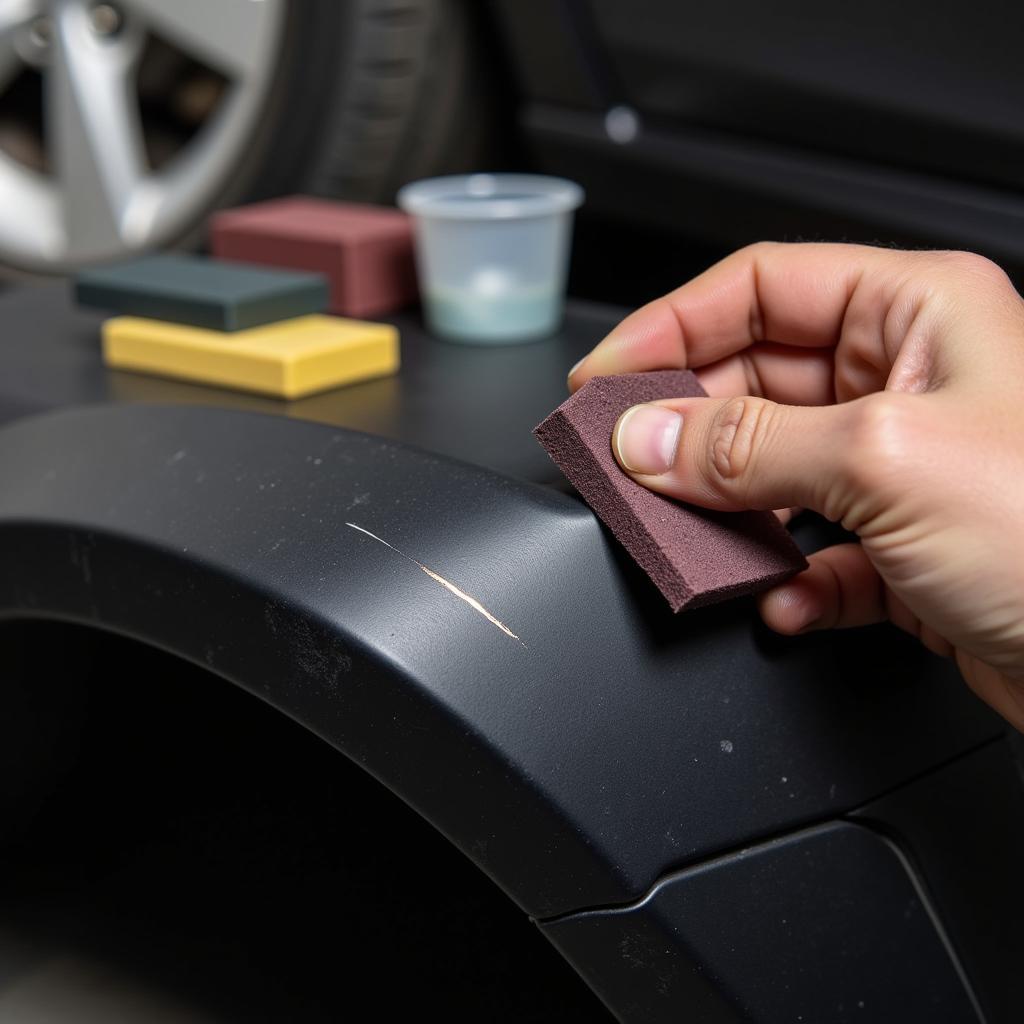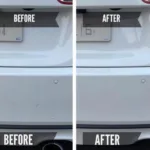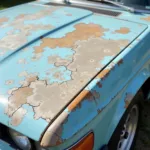Repairing and painting rubber car bumpers is a common practice, often a more cost-effective solution than complete replacement. This article will delve into the benefits, drawbacks, and the process involved in repairing and painting your car’s rubber bumpers, helping you make an informed decision.
When is Repairing and Painting Rubber Car Bumpers Recommended?
Minor to moderate damage like scratches, scuffs, small dents, and cracks are usually repairable. Repairing and painting rubber car bumpers is a great option if the damage is cosmetic and hasn’t compromised the bumper’s structural integrity. This approach saves you money while restoring your car’s appearance.
Understanding the Repair Process
Repairing a rubber bumper typically involves cleaning, sanding, filling, priming, and painting. The process begins with thoroughly cleaning the damaged area to remove dirt, grease, and any loose paint. Sanding smooths the surface and prepares it for the filler. After the filler dries and is sanded smooth, primer is applied to provide a good base for the paint. Finally, the bumper is painted to match the car’s original color.
Advantages of Repairing and Painting over Replacement
Cost is a major factor. Repairing and painting is significantly cheaper than replacing the entire bumper. It’s also environmentally friendly as it reduces waste. Furthermore, a properly repaired and painted bumper can look as good as new, restoring your car’s aesthetic appeal.
DIY vs. Professional Repair: Which is Right for You?
While minor scuffs and scratches might be manageable with DIY kits, more extensive damage requires professional expertise. Professionals have the tools, experience, and knowledge to ensure a high-quality, long-lasting repair. They can also perfectly match the paint color to your car.
Factors Affecting the Cost of Repair
The extent of the damage, the type of repair needed, and the labor rates in your area all influence the final cost. Getting multiple quotes from reputable repair shops is recommended to ensure you’re getting a fair price.
Ensuring a Long-Lasting Repair
Proper preparation is key. Thoroughly cleaning and sanding the damaged area is crucial for proper adhesion of the filler and paint. Choosing high-quality materials and ensuring proper curing times also contribute to the longevity of the repair.
Conclusion
Repairing and painting rubber car bumpers is a recommended repair for minor to moderate damage, offering a cost-effective and environmentally friendly alternative to replacement. Whether you choose DIY or professional repair, ensuring proper preparation and using high-quality materials are crucial for a long-lasting, aesthetically pleasing result. By weighing the pros and cons and understanding the repair process, you can make the best decision for your vehicle.
FAQ
-
How long does the repair process typically take? This depends on the extent of the damage but generally takes 1-3 days.
-
Can all types of bumper damage be repaired? Severe damage compromising the bumper’s structural integrity may require replacement.
-
Will the repaired area be noticeable? A professional repair should blend seamlessly with the rest of the bumper.
-
How can I maintain the repaired bumper? Regular washing and waxing can help protect the paint.
-
What kind of paint is used for rubber bumpers? Flexible paints designed specifically for plastic and rubber are used.
-
Is it safe to drive with a damaged bumper? Minor cosmetic damage might be okay, but significant damage can affect safety and should be addressed promptly.
-
How do I find a reputable repair shop? Ask for recommendations, check online reviews, and get multiple quotes.
Common Repair Scenarios:
- Scratches: Light scratches can often be buffed out, while deeper ones might require filling and painting.
- Scuffs: Similar to scratches, scuffs can often be addressed with sanding and repainting.
- Dents: Small dents can be filled and painted, while larger ones might require more extensive repair.
- Cracks: Depending on the size and location, cracks can sometimes be repaired, but severe cracks often necessitate replacement.
Further Reading:
- Car Maintenance Tips
- Understanding Car Paint Types
- Choosing the Right Auto Body Shop
Need help? Contact us via WhatsApp: +1(641)206-8880, Email: [email protected]. Our customer service team is available 24/7.



